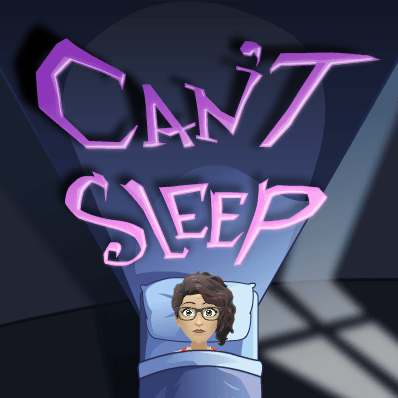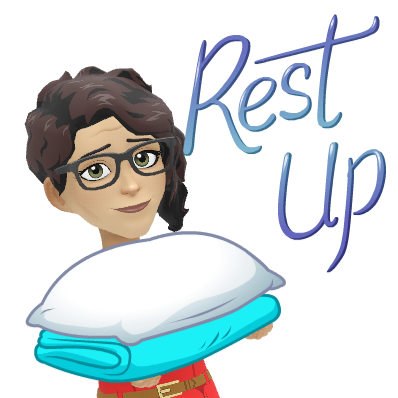
When I started reading Ontario’s 2020 Mathematic Curriculum, I came across “Overall Expectations A. Social-Emotional Learning (SEL) Skills in Mathematics and the Mathematical Processes.”
According to the ministry document …
“This (Math) strand focuses on students’ development and application of social-emotional learning skills to support their learning of math concepts and skills, foster their overall well-being and ability to learn, and help them build resilience and thrive as math learners. As they develop SEL skills, students demonstrate a greater ability to understand and apply the mathematical processes, which are critical to supporting learning in mathematics. In all grades of the mathematics program, the learning related to this strand takes place in the context of learning related to all other strands, and it should be assessed and evaluated within these contexts.”
Social-Emotional Learning will go beyond teaching just Math …
“As of the 2019-20 school year, learning about mental health in Ontario schools will take place:
- through the newly enhanced elementary Health and Physical Education (HPE) curriculum
- across the curriculum, as well as in Kindergarten, and
- as a part of students’ everyday experience at school”
Social-Emotional Learning (SEL) skills
- “Throughout the curriculum, students also learn to apply SEL skills.
- Because these skills are so important to students’ mental health and healthy development, SEL is now also a distinct section of the updated curriculum. This new section builds on Living Skills learning from the previous curriculum to help students foster their own overall health and well-being, positive mental health, resilience and ability to learn and thrive. The table below shows what students learn about and why.
| Students learn about: | So they can: |
| identifying and managing emotions | express their feelings and understand the feelings of others |
| coping with stress | develop resilience |
| positive motivation | build a sense of hope and the will to keep trying for their goals |
| building relationships | support healthy relationships and respect diversity |
| deepening their sense of self | build an understanding of their own identity and feel that they belong |
| thinking critically and creatively | support decision-making and problem solving |
Students apply these everyday skills as part of their learning across the other three parts of the curriculum, and in their experiences at school, at home and in the community.
A few examples of how these skills could be integrated with the other three parts of the curriculum (Active Living, Movement Competence and Healthy Living) are outlined below.
- Grade 1: To learn about positive motivation, students practise showing willingness to try out new skills and keep practising. (Movement Competence)
- Grade 2: To practise identifying and managing emotions, students try taking a moment to breathe deeply and refocus if they are feeling anxious or upset before starting a physical activity. (Active Living)
- Grade 3: To build relationships, students working in small groups practise welcoming everyone and being willing to be a partner with anyone in the group. (Active Living)
- Grade 4: As they learn about coping with stress, students explain how knowing about physical and emotional changes that come with puberty can help them handle those changes when they occur. (Healthy Living)
- Grade 5: To practise thinking critically and creatively, students make connections between being active, working towards personal fitness goals and mental health. (Active Living)
- Grade 6: To deepen their sense of self, students think about how stereotypes affect how they feel about themselves and identify other factors, including acceptance by others, that influence their sense of themselves. (Healthy Living)
- Grade 7: As they learn about coping with stress, students explain how to access various sources of support (for example, school staff, family, counselling and medical professionals) when dealing with mental health challenges or issues related to substance use. (Healthy Living)
- Grade 8: To practise identifying and managing emotions, students explain how social media can create feelings of stress and describe strategies, such as connecting thoughts, feelings, and actions, that can help maintain balance and perspective. (Healthy Living)”
Supporting students
- “There is strong evidence that developing social-emotional learning skills at school contributes to student well-being and successful academic performance. Learning about mental health can also help to reduce the stigma around problems in this area. When students understand that many people experience mental health difficulties from time to time, and that there is support available when needed, they are more likely to seek help early when problems arise.
- As they develop SEL skills, students will also gain “transferable skills” (for example, self-directed learning, collaboration, critical thinking, communication and innovation) and develop “learning skills and work habits” as they learn to set goals, follow through and overcome challenges. These interconnected skills taken together, help foster overall health and well-being, and the ability to learn, build resilience and thrive. Helping students make connections among these skills is key to enhancing their learning experience in school and throughout their lives.”
My first question was where did this initiative originate from?
Collaborative for the Advancement of Social and Emotional Learning (CASEL)
The concept was first published in 1997 Promoting social and emotional learning: Guidelines for educators (Elias, Zins, Weissberg et. al., 1997) by the Association for Supervision of Curriculum Development (ASCD). It was coauthored by members of the Research and Guidelines Committee of the Collaborative for the Advancement of Social and Emotional Learning (CASEL). According to CASEL it is a “trusted source for knowledge about high-quality, evidence-based social and emotional learning (SEL). CASEL supports educators and policy leaders and enhances the experiences and outcomes for all PreK-12 students.”
CASEL provides training and resources for programs that support social-emotional learning such as:
Second Step “provides instruction in social and emotional learning with units on skills for learning, empathy, emotion management, friendship skills, and problem solving. The program contains separate sets of lessons for use in prekindergarten through eighth grade implemented in 22 to 28 weeks each year.”
Steps to Respect “is a school-wide program designed for use in third through sixth grade. Implementation occurs in three phases: school administrators take stock of their school environment and bullying issues; then all adults in the building are trained; and finally classroom-based lessons are taught.”
In a meta study The Impact of Enhancing Students’ Social and Emotional Learning: A Meta-Analysis of School-Based Universal Interventions endorsed by CASEL and written by Durlak, Weissberg, Dymnicki, Taylor, & Schellinger (2011) universal social and emotional skills (SEL) participants demonstrated improved social and emotional skills, attitudes, behaviour, and academic performance where school teaching staff successfully conducted SEL programs.
The use of four recommended practices for developing skills and the presence of implementation problems moderated program outcomes (Durlak et. al, 2011.) The practices used the SAFE acronym (Sequenced, Active, Focus, Explicit).
“New behaviors and more complicated skills usually need to be broken down into smaller steps and sequentially mastered, suggesting the benefit of a coordinated sequence of activities that links the learning steps and provides youth with opportunities to connect these steps (Sequenced).”
“Gresham (1995) has noted that it is ‘‘important to help children learn how to combine, chain and sequence behaviors that make up various social skills’’ (p. 1023). Lesson plans and program manuals are often used for this purpose. An effective teaching strategy for many youth emphasizes the importance of active forms of learning that require youth to act on the material (Active).”
“’ ‘It is well documented that practice is a necessary condition for skill acquisition’ (Salas & Cannon-Bowers, 2001, p. 480). Sufficient time and attention must also be devoted to any task for learning to occur (Focus). Therefore, some time should be set aside primarily for skill development.”
“Clear and specific learning objectives over general ones are preferred because it is important that youth know what they are expected to learn (Explicit). “
In other words, SEL programs must follow the SAFE practices and be well-executed in order to be effective. The meta study noted that only a small percentage of the meta research investigated did follow-up assessments to determine long term efficacy of SEL practices.
The meta study also noted that classroom teachers were the most effective in implementing SEL practices which usually included a specific curriculum and set of instructions such as behavioural rehearsals and cooperative learning. It noted that SEL programs were successful at all education levels.
The meta study included books/articles/reports that ranged in dates between 1955 to 2007 (e.g. 1955 to 1989 work = 25% of research included) and published/unpublished articles/books (e.g. unpublished reports = 19% of research included). The meta study excluded studies targeting students with behavioural, emotional, or academic issues. In addition, the meta study did not note effects on students with special education needs or the impact on students from lowers socioeconomic backgrounds.
Economic Value to Social and Emotional Learning
In The Economic Value to Social and Emotional Learning, the paper noted most SEL interventions had multiple goals and benefits and this contrasted with interventions to improve cognitive test results in a particular subject. The SEL interventions reduced aggression which “may also improve impulse control and later juvenile crime and/or may raise academic achievement”. The “measures of benefits are based upon a limited set of dimensions … actual benefits may be considerably higher if we were able to identify all effects” (Belfield et. al., 2015.) The paper examined the costs of Second Step at $440 per student including instructional time.
What does this mean to teachers?
In my opinion, I am sure that SEL programs do have an impact on students’ academic and emotional success. I also agree that learning should be social, in the context of a classroom, in collaborative groups and through discussions. What concerns me is that in order to be effectively implemented, SEL programs require a great deal of classroom teacher training and program costs.
Ontario’s Mathematics Curriculum includes SEL as a strand within the Mathematics curriculum. The ministry of education states that SEL “should be assessed and evaluated within these contexts.” Does this mean that for each subject like Mathematics, teachers will be assessing SEL skills as a strand of the subject?
I do not agree with Social-Emotional Learning (SEL) Skills being included as a strand in the Ontario’s Mathematics curriculum for 2020. I see SEL skills as being incorporated into the learning skills elementary teachers already report upon three times an academic year in the Elementary Report Cards.
I wonder when the SEL resources and teacher training will be provided to Ontario’s elementary teachers. As the The Impact of Enhancing Students’ Social and Emotional Learning: A Meta-Analysis of School-Based Universal Interventions paper reports, in order to be effective, teachers must be trained in SEL SAFE instructional strategies. In a time when education budgets are being cut, this sounds like an expensive initiative.
Collaboratively Yours,
Deb Weston, PhD
References
Belfield, C., Bowden, A. B., Klapp, A., Levin, H., Shand, R., & Zander, S. (2015). The economic value of social and emotional learning. Journal of Benefit-Cost Analysis, 6(3), 508-544.
Durlak, J. A., Weissberg, R. P., Dymnicki, A. B., Taylor, R. D., & Schellinger, K. B. (2011). The impact of enhancing students’ social and emotional learning: A meta‐analysis of school‐based universal interventions. Child development, 82(1), 405-432.
Zins, J. E. (Ed.) (2004) Building academic success on social and emotional learning: What does the research say?. Teachers College Press.
Zins, J. E., Weissberg, R. P., Wang, M. C., & Walberg, H. J. (2004). Building school success through social and emotional learning.









